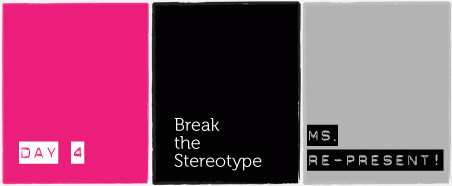
Language plays a key role in how we make meaning of the world. They express our experiences, share how we feel, articulate our differences and connect our struggles and experiences.
The language used by all forms of media are powerful tools in the processes of meaning making. The language used in reporting tells us a lot about the assumptions that are made about people and their roles in society. The messages framed by the media shape the environment and spaces we inhabit, and contribute to the construction of norms, cultural ideas and stereotypes about gender.
Language includes not just that which is spoken and written, but also that which is seen. Many feminists and women's rights advocates have uncovered how the representation of women puts us into boxes that reinforces stereotypes and contributes to discrimination and inequality.
These messages are so ubiquitous that we often don't even realise when we walk pass them. Or they have become so normalised that we no longer take the time to question, get angry or concerned.
How often have you read a newspaper or watched a TV insert about a prominent woman politician who is framed primarily as ‘a mother/ daughter/wife’? Or whose clothes or physical appearance gets more column inches than her political position? Have you paid attention to how survivors of violence are described and spoken about in the media? What does the description of a rape survivor as a ‘busty blonde’ vs a ‘new bride’ tell us about the meaning that is being constructed around the violation?
Reclaim the language. Make your own meaning. Read between the lines.
1) Question
- Look at today's newspaper or online news, and look for reports that feature women. For example, women in leadership, advertisements, or stories about violence against women.
- What is the photograph used to illustrate the story? What is the headline chosen to capture attention?
- How do they create a picture of the role of men and women?
- What do they say about the values we place on each gender?
- What are the cultural and normative assumptions that underlie the way it is presented?
- Compare it to the diverse realities of women and girls in the context. Do the assumptions and realities match?
2) Ms. Re-Present!
From misrepresentation to Ms. Re-Present! Break the stereotype with facts and reality. Re-present the story by showing the real picture of what's happening.
a) Create a postcard!
- If it's a newspaper, cut out the picture and the problematic headline or sentence in the report and use them to make a paper postcard.
- If it's an online media, save the image onto your computer. Right click on the image, and choose "save image as" and use the images to create a digital postcard.
- Stamp over the headlines with the words "Ms. Re-Present!"
- You can use the TBTT Ms. Re-Present! stencil here (right click, select "Save as", then copy and paste it over your digital postcard or print it out to stick over your paper postcard), or create your own!
- Add a statistic, question or statement that uncovers the stereotype with reality.
- For example, a photo of a female politician described as "a mother of 3". Stamp "Ms. Re-Present!" over the statement, and add your question: "Would you still ask this question if she was a man?"
- Or a report of a member of parliament calling for stricter dress codes to prevent rape. Stamp "Ms. Re-Present!" over the headline, and add fact: "22% of rape victims are under the age of 12. What does clothes have to do with it?"
b) Make an advert
- Take issue with sexism in advertisements. Create your own :)
- Cut out or save advertisements that clearly promotes sexist ideas about gender roles, and turn them on its head - literally!
- Stamp over the tagline with "Ms. Re-Present!"
- Replace the woman's head with a man's, or the man's with a woman's. And let the picture tell the story.
3) Share
- Send your postcard to your Prime Minister, the CEO of the company that created the ad, or to the Editor of the newspaper.
- Organise a joint-action, and mobilise your friends and network to create and send enough postcards to make an impression. Sometimes all it takes is one, but sometimes, it's also empowering (and fun) to take action together.
- Share your postcard with other campaigners.
- Post it up on the Take Back The Tech! Facebook page
- Create an account and upload your image to the site.
- Tweet it and add the #takebackthetech #16days hashtags
- Or simply email it to us and we'll put it up for you: ideas@takebackthetech.net
Take control of women's representation. Change the story with reality. Ms. Re-Present!
- Log in to post comments
